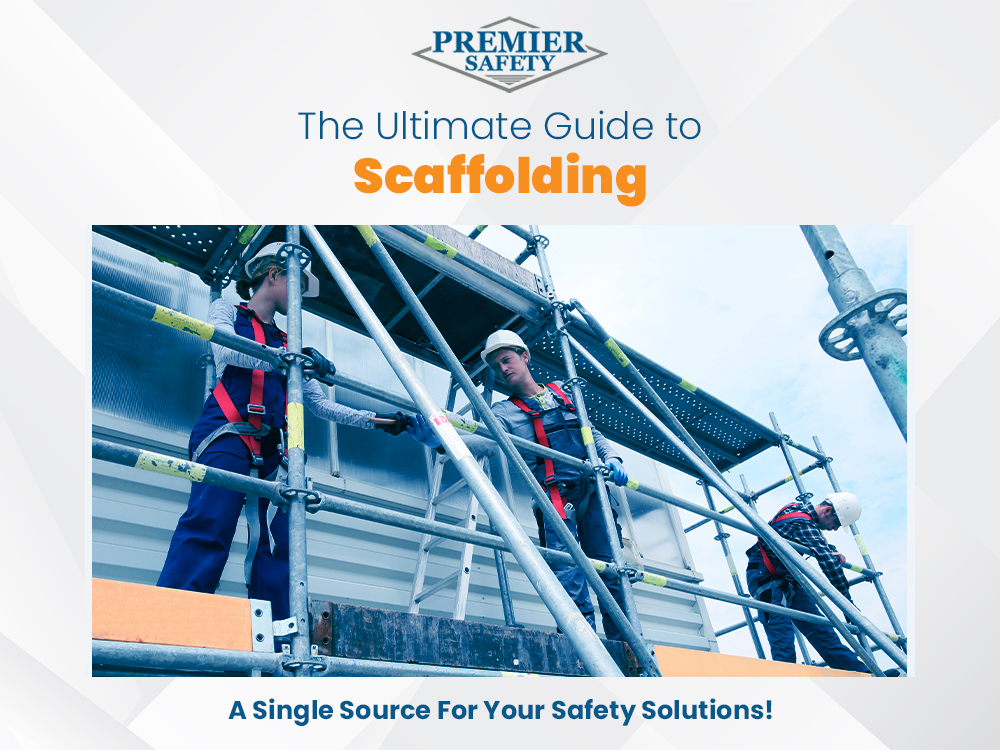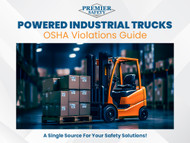Powered Industrial Trucks: OSHA Violation Guide
Posted by Michael Womack - Premier Safety on Mar 5th 2024
 Picture this: a forklift suddenly tips over in a bustling warehouse, turning an ordinary day into a potential disaster. This scenario isn't just a frightful possibility but a real risk where powered industrial trucks play a critical role. The Occupational Safety and Health Administration (OSHA) sets strict rules to prevent such mishaps. But what do these regulations encompass, and how can you ensure your workplace isn't just compliant but also safe for your team?
Picture this: a forklift suddenly tips over in a bustling warehouse, turning an ordinary day into a potential disaster. This scenario isn't just a frightful possibility but a real risk where powered industrial trucks play a critical role. The Occupational Safety and Health Administration (OSHA) sets strict rules to prevent such mishaps. But what do these regulations encompass, and how can you ensure your workplace isn't just compliant but also safe for your team?
What is a Powered Industrial Truck?
First things first, let's clarify what OSHA considers a powered industrial truck. Essentially, it's any mobile, power-propelled truck used to carry, push, pull, lift, stack, or tier materials. Forklifts, pallet jacks, and order pickers are important for daily operations but can be dangerous if not used safely.
OSHA Standards and You
OSHA designed the standards for these vehicles to protect workers from potential hazards. They cover a wide range of topics, from design and construction to maintenance and operation. Making sure your equipment and procedures meet these standards isn't just about following rules; it's about protecting lives.
Common Forklift Violations
Steering clear of violations begins with understanding them. Common slip-ups include inadequate operator training, poor maintenance, and improper load handling. Addressing these areas proactively can significantly reduce the risk of accidents and fines.
The Exception to the Rule
Interestingly, not everything with wheels and a motor falls into this category. Vehicles used for earth moving and over-the-road haulage are exempt. Knowing the distinctions helps focus your safety efforts on the right equipment.
Safety When Unattended
Leaving a powered industrial truck unattended? A protocol exists for that. Lower the forks to the ground, neutralize the controls, shut off the power, and set the brakes. This procedure ensures the truck stays put, reducing the risk of unintended movement.
Fork Positioning: A Key to Prevention
When loading, keep the forks low and tilted forward to prevent tipping. This is important for stability and safety in your workspace.
Hazards and How to Handle Them
Powered industrial trucks come with their set of dangers: tip-overs, collisions, and pedestrian accidents, to name a few. Regular training, clear workplace design, and strict operational protocols are your best defense against these hazards.
The Leading Cause of Fatalities
Disturbingly, tip-overs are the number one cause of fatalities involving powered industrial trucks. Training operators to handle the equipment in all conditions is paramount.
Accidents: A Grim Reality
Statistics show a stark picture: tens of thousands of workers sustain injuries in forklift-related incidents every year. These accidents underscore the importance of rigorous training and adherence to safety standards.
Inspection Insights
OSHA requires employers to check powered industrial trucks daily or after each shift if used 24/7. These inspections are critical for identifying and addressing potential issues before they lead to accidents.
The Quintessential Safety Device
Believe it or not, the operator is the most critical safety feature. A well-trained, alert operator can prevent most accidents before they occur, making education and vigilance key.
Engaging Question for Readers:
Have you ever witnessed a safety violation involving a powered industrial truck? How did they handle it, and what lessons did they learn?
FAQs:
Q: How often should operators receive training?
A: OSHA requires that operators be trained upon hire and every three years thereafter, or whenever there's a change in equipment or conditions.
Q: Can anyone operate a powered industrial truck?
A: No, only certified individuals who've undergone proper training and evaluation should operate these vehicles.
Wrap-Up and A Nudge to Act
Tackling OSHA regulations for powered industrial trucks is no small feat. But with the right knowledge and actions, you can turn a daunting task into a routine part of your safety culture. Remember, compliance isn't just about avoiding fines; it's about creating a safe, efficient workspace where everyone can thrive.
Feeling overwhelmed? You don't have to go it alone. Connect with Premier Safety, your go-to source for safety and facility solutions. Whether it's equipment, training, or consultation, we're here to help you stay safe and compliant.

